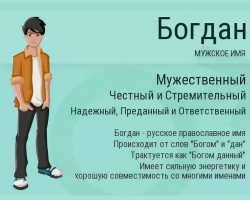What are anticoagulants in medicine? Preparations are used for effective prevention of blood coagulation.
Content
- Anticoagulants: action mechanism
- Anticoagulants primary and secondary
- What time of day is it better to take anticoagulants?
- Anticoagulants - indirect drugs: List with names
- Anticoagulants - direct action drugs: List with names
- Side effects of anticoagulants of direct and indirect action
- Modern anticoagulants of a new generation: List of drugs
- Indications for the appointment of anticoagulants
- Anticoagulants for the prevention of thrombosis
- Why are external anticoagulants intended for?
- Anticoagulants: a list of drugs for phlebotrombosis
- Anticoagulants and antiplatelets with unstable angina pectoris for liquefaction of blood
- Anticoagulants: a list of drugs for atscent arrhythmias
- Anticoagulants for heart attack
- Anticoagulants and alcohol: compatibility
- Anticoagulants during pregnancy
- The effect of anticoagulants on a biochemical blood test
- Anticoagulants before surgery
- What could be with an overdose of anticoagulants of an indirect type of action?
- Can an anticoagulants cause a thrombus separation?
- Candles anticoagulants
- Natural plant anticoagulants
- Diet when taking anticoagulants
- Anticoagulants: folk remedies
- Video: About anticoagulants
Thanks to the antiagenic effect, the viscosity of the plasma is normalized, and the probability of blocking the vessels is eliminated. The drugs are produced in a tablet form and in the form of a solution for injection.
Anticoagulants: action mechanism
- Depending on the active substance, anticoagulants affect At different stages of blood coagulation.
- Heparin -based preparations, geurodin reduce the activity of prothrombin in plasma. Anticoagulants based on dikumarina, Warfarin, Phoenilina and the entire kumarin row do not allow excessive accumulation of prothrombin in the liver, taking a direct part in blood coagulation.
Anticoagulants primary and secondary
- Maintaining blood flow in a liquid state occurs due to natural anticoagulants, which are divided into 2 type - primary and secondary.
- Primary anticoagulants are an integral component of blood. For example, antitrombin and globulin are synthesized in the liver.
- Secondary anticoagulants Formed during the accumulation and dissolution of fibrin threads. That is, these include processed plasma coagulation factors. The appointment of secondary anticoagulants - Slow down the blood property of the blood and prevent the movement of the thrombus through the vessels.

What time of day is it better to take anticoagulants?
The correct appointment to the drugs should be prescribed by the doctor. The main effect on the drug is exerted by the processes of the gastrointestinal tract and parallel to the drugs.
Consider several universal recommendations for taking anticoagulant drugs:
- Warfarin It is recommended to use once a day at the same time. The optimal period is evening.
- Xarelto It is taken once a day during meals at the same time.
- Acetylsalicylic acid preparationsit is recommended to take at night, since during the period of night rest, various complications most often occur.
- Rivaroxaban It is taken during meals in two doses.
Anticoagulants - indirect drugs: List with names
The action of indirect anticoagulants is the destruction of prothrombin in the liver. The drugs weaken the effect of vitamin K and block the reaction of dependent factors, as a result of which a defective environment for blood coagulation is formed. Indirect anticoagulants are accepted orally. In addition to the active substance, there are useful vitamins for the body.
Cumarine anticoagulants: List
- Neodicumarin
- Sinkumar
- Warfarin
- Fenilin
- Thepromaron
- Omafin
- Dipaxin
Anticoagulants - direct action drugs: List with names
Direct anticoagulants reduce blood thrombin concentration. Heparins of this group are produced in the dosage form for intravenous and subcutaneous conduct. The effect of the drug is fast, but relatively short.
- The anti -support effect of heparin consists in blocking the biosynthesis of thrombin and thromboplastin, which delays the transition of prothrombin to thrombin, and platelet aggregation decreases.
- Drugs with heparin are prescribed for diagnosis of thrombophlebitis, thromboembolism, at the acute stage of coronary heart disease.
List of anticoagulants with direct action:
- Heparin
- Fraxyparin
- Enoxaparin
- Overoparin
- Daiteparin
- Lepirudin
- Hirudin
Side effects of anticoagulants of direct and indirect action
Anticoagulant therapy in case of violation of the individual parameters of the patient causes a number of side effects. The most common consequence is bleeding of various nature.
If there are wounds on the body and cuts, there are abundant blood discharge. Another option is blood flow through the nose. With internal bleeding, cyanotic spots are formed on the body. Blood clots change the color of waste waste.

Typical side symptoms of anticoagulants:
- vomiting with a grain -shaped structure;
- swelling and swelling of the skin;
- difficulties with stopping bleeding in case of skin damage;
- concomitant dizziness and weakness;
- concomitant problems with vision and speech;
- a sharp set of weight,
- frequent numbness of the limbs and unnecessary hypothermia.
Bleeding when taking anticoagulants, symptoms:
- black impurities in a chair and redness in urine;
- strongly bleeding gums;
- nose bleed;
- too abundant menstruation;
- long -term bleeding from the cut.
Regular control of the blood coagulation level minimizes the probability of complications. Any type of bleeding when taking anticoagulants is a significant cause for emergency seeing a doctor.
Modern anticoagulants of a new generation: List of drugs
- We have widespread use Anticoagulants of a new generation. Such drugs do not require constant control of coagulation indicators. The action of anticoagulants is selective and is aimed at X-factor of the coagulation system. Thus, the control of the formation of fibrin occurs better.
The high specificity of the new generation anticoagulants and a convenient admission course gives them practical and clinical advantages in comparison with other drugs. The choice of the drug is carried out by diagnosing individual risks of developing cardiovascular diseases and bleeding.
Anticoagulants - a list of drugs in tablets:
- Dabigatran
- Rivaroxaban
- Apixban
In the Russian market, drugs have gained great popularity Xarelto and Pradax. Their active substances are not inferior to anticoagulants in the prevention of stroke. Significantly reduce the risk of all types of bleeding. When using anticoagulants in tablets, it is important to strictly follow the dosing modes.
Indications for the appointment of anticoagulants
Violation of blood coagulation leads to serious diseases. Timely impact on inhibiting active coagulation factors can be prevented by the development of pathologies.
Indications for the appointment of anticoagulants are:
- thromboembolic pathologies;
- arterial thrombosis;
- changeable angina pectoris, acute myocrand infarction;
- treatment and prevention of vein thrombosis;
- operational and surgical manipulations with blood vessels;
- the need to maintain a liquid state of blood with various manipulations;
- when pouring blood and hemodialysis.

Anticoagulants for the prevention of thrombosis
In modern medicine, the issue of prevention and treatment of thrombosis is very relevant. Violation of blood coagulation significantly reduces life expectancy, leads to disability.
- Medication allows prevent blood clots and minimize dangerous consequences. You can not ignore the recommendations of doctors to receive anticoagulants, you can reduce the need for their quantity.
- Full blood coagulation is necessary for a person to live. It is advisable to maintain this function throughout life. You can reduce the risk of thrombosis by both anticoagulants and natural complexes.

Anticoagulants are prescribed for the prevention of thrombosis:
- Elikvis
- Aspirin Cardio
- Azecardol
- Varfarin Nicomed
- Cardiask
- Cardiomagnil
- Thrombo ass
- Elivkis
Why are external anticoagulants intended for?
- To prevent the occurrence of thrombosis, use external anticoagulants. Local heparins are absorbed into surface tissue and have a preventive effect. Active substance blocks many enzymes and inflammation mediators, reduces the number of platelets.
- The anticoagulation action is supported by the decongestant and wound healing effect. The pathogenic effect of external anticoagulants on platelet factors helps to restore cell membranes, prevents the appearance of bruises and vascular nets.
For local treatment of varicose veins, creams with anticoagulation effect are prescribed:
- Heparin ointment
- Gel Lioton
- Lavventum
- Venolife
- Thrombus
- Troxerutin
Anticoagulants: a list of drugs for phlebotrombosis
Acute thrombophlebitis occurs in 10-20 % of the population and carry the danger of death. Anticoagulant therapy is considered a highly effective and conservative treatment of this pathology.
- In the absence of contraindications, the acute stage of thrombophlebitis is treated Direct anticoagulants. At the first stage of treatment, it is prescribed Nefracted and low molecular weight heparin. The main advantage of the drugs is with a slight increase in administration the smallest number of complications. The duration of taking anticoagulants depends on the risk of repeated thrombosis.
- The most popular and effective drug for phlebotrombosis is considered Fraxyparin. The anticoagulant is available in liquid form for injection. When using it, the risk of bleeding is significantly reduced.

The following anticoagulants are used to treat thrombophlebitis:
- Fontaparinux
- Rivaroxaban
- Nefctioning heparin
- Low molecular weight heparin
Anticoagulants and antiplatelets with unstable angina pectoris for liquefaction of blood
- Paramount importance in the treatment of patients with unstable angina pectoris play Antitrombotic drugs. Anticoagulants and anti -agents They help prevent platelets, slow down the activity of blood coagulation factors, and contribute to the dissolution of fibrin blood clots.
- The first -line preparations for angina pectoris are considered aspirin. The preventive dose of the drug is 100 mg per day, in other cases, the dosage is established by the attending physician.
- In order to prevent angina pectoris, the component of the acetylsalicylate of Lizin, known under the trade name, is widely used Laspalor Aspizol.
- The second line with anticoagulant effects refers to Tiklopidin - A drug with a powerful overwhelming effect on platelets.

Anticoagulants: a list of drugs for atscent arrhythmias
- For the treatment of atrial fibrillation, anticoagulants are necessary. Patients are prescribed disaggregants. High arterial pressure, ischemic attack, preceding stroke - are an indication for the appointment of anticoagulants for atrial fibrillation.
- According to studies, taking anticoagulants in contrast to the complete lack of treatment is effective and effective.
For liquefaction of blood with atrial fibrillation, they are prescribed:
- Elikvis
- Xarelto
- Pradax
- Warfarin
Anticoagulants for heart attack
- In the acute period of myocardial infarction, a key role in the treatment of the patient plays exposure on the coagulation system of blood. With effective therapy, a comprehensive prescription of drugs that affect different links of hemostasis is necessary.
- Correct combination anticoagulants and anti -agents It allows you to significantly minimize the risk of repeated relapse with large -scale myocardial damage and undesirable bleeding.
- In practice, a narrow circle of effective anticoagulants is used in medicine, among which nefctioning and low molecular weight heparin, acetylsalicylic acid.

Anticoagulants and alcohol: compatibility
- Together with anticoagulants, you cannot take a large amount of alcohol. Alcohol abuse affects blood viscosity. The likelihood of internal and external bleeding increases.
- Alcohol is allowed in minimal quantities in exceptional cases. Banal aspirin, Dikumarin, Phoenilin In combination with alcohol may result by death.
Anticoagulants during pregnancy
- During the period of gestation and in the first weeks after childbirth, it increases the likelihood of developing thromboembolic diseases. Changes in the hormonal background and the structure of the body lead to changes in the venous movement of the blood, as well as the deterioration of the strength of the structure of the vessels.
- Pregnant women with heart diseases, with lung hypertension, with severe congenital syndromes may come across thromboembolic complications.
- Reception of anticoagulants during pregnancy and breastfeeding is allowed only as prescribed by the attending physician. The drugs are selected individually and depend on many related factors. Medication prevention recommended for women with prostheted valves, with thrombophilia, in the presence of venous deviations.
- Numerous studies confirmed the safety of taking individual dosages low -molecular weight and nephewed heparin.
- Separate drugs, for example, Warfarin Negatively affect the development of the fetus.

The effect of anticoagulants on a biochemical blood test
- When taking anticoagulants, it is necessary to periodically conduct blood analysis. A number of indicators allows you to evaluate blood coagulation disorders.
- The key indicator is the coagulation time - the period of the formation of the clot during bleeding. Depends on this indicator dosage of the prescribed anticoagulant.
- The next important value is the amount of fibrinogen-the overestimated indicator signals the risk of the development of ischemic stroke and cardiovascular diseases.
- Since the main task of anticoagulants to dilute blood, it is very important control - International normalized attitude. The normal range of the MOL when taking anticoagulants 2,0-3,0.
An overstated indicator warns of a possible ischemic stroke, underestimated - of a possible hemorrhage in the brain.
- The anticoagulants of the new generation are controlled by analyzes much less often and only at the discretion of the doctor.
Anticoagulants before surgery
- Before surgery, patients who take anticoagulants for a long period, it is necessary suspend antitrombic therapy.
- Interruption of the course of treatment is risky and entails possible thromboembolic complications. On the other hand, taking anticoagulants can provoke bleeding of the mucous membranes.
- Anticoagulants before surgery are prescribed and canceled individually. For high -quality anesthesia, drugs, as a rule, cancel 2-5 days before surgery.
- For example, patients taking Dabigatran, with normal creatinine indicators, stop taking the drug 5 days before the start of the operation. A return to therapy is possible the very next day after the operation.

What could be with an overdose of anticoagulants of an indirect type of action?
An overdose with anticoagulants of indirect type of action leads to various types of bleeding. Complications appear due to changes in the nature of the disease, duration and intensity of treatment.
With the appearance of negative consequences from taking anticoagulants, there is a general algorithm of actions:
- Interruption of anticoagulant therapy
- The appointment of drugs with vitamin K
- Infusion therapy to prevent pathological losses in the body
Vitamin K acts as an anticoagulants of indirect action and helps the body reduce the body's sensitivity to the drug in 1-2 days.
Can an anticoagulants cause a thrombus separation?
- Relapses are not excluded against the background of anticoagulant therapy. Anticoagulants minimize the risk of complications, but do not exclude the deterioration of pathologies.
- At the first signs of a deterioration in well -being, it is necessary Consultation of the attending physician. For any type of treatment, there are alternative options.
- Anticoagulants do not give 100 % of the guarantees from a possible breakdown of a thrombus or repeated heart attack, but provide maximum protection for the body.
Candles anticoagulants
- With the development of internal hemorrhoids, may occur microscopic blood clots. In large quantities, they turn into the next stage - thrombosis of hemorrhoids. Similar symptoms are eliminated using suppositories of anticoagulants.
- The active substance of the candles is heparin, which prevents the formation of blood clots and strengthens the walls of capillaries and veins.
- Rectal suppositories containing an anticoagulant substance heparin are Nigepan and hypiprobin.

Natural plant anticoagulants
- The chemical composition of anticoagulants can replace with plant components. A similar effect with the dosage form has a cunning, Donnik medicinal, wormwood, chamomile, a lintel. You can brew teas with these herbs and drink 1 cup 2 times a day.
- Aloe juice, hawthorn, chestnut tincture, hop cones and sage leaves can replace drugs with acetylsalicylic acid (apply according to the packaging instructions).
- Get it if necessary anticoagulants in food products, Dilute The diet is red currant, ink, cherry, figs, citrus, onions, fruits of thorns, etc.
- Products are able to influence blood viscosity with a high content of salicylic acid, vitamin E, fatty acids, iodine.
- Powerful anticoagulants are spices such as garlic, ginger, red pepper.
- High vitamin e content is noted in seafood, nuts, seeds.
Important: You can not replace the drugs prescribed by the doctor with plant components and use them more than usual in combination with treatment.

Diet when taking anticoagulants
When taking anticoagulants, it is not necessary to adhere to strict diets, but it is recommended to make small adjustments to the diet.
- The effect of drugs of this pharmacological group interacts with vitamin K, The source of which is the products.
- A large concentration of vitamin contains in greenery, cruciferous vegetables, fruits, olive oil, dairy products, cereals and bran. All these products should be in the diet in moderate quantities, there is no need to increase their number.
Anticoagulants: folk remedies
Many folk remedies have an anticoagulation effect. If the doctor has not prescribed drugs, then as a prevention you can use simple blood liquefaction methods:
- Add a natural home remedy to dishes turmeric. Recommended daily dose kurkumin from 500 mg to 10 g.
- The diet should be present fish. You can replace healthy fatty acids by taking fish oil.
- To cook dishes, use cold pressing olive oil.
- At dinner add 50 g of red guiltOr add red grape varieties to the diet.
- Drink pomegranate juice, Polyphenols improve blood circulation.
- Boil Herbal teas from the root of licorice, sage, hawthorn, donnik, chicory.
Another alternative version of hirudotherapy with leeches. Any folk treatment requires a specialist consultation.

Useful articles about health:
- From which I have a temperature of 37.2-37.5 ° C
- Acclimatization of an adult and child
- Why no teeth have a child
- Grinding teeth in a dream
- 10 frequent causes of diaper rash in newborns








It is important to select a remedy with a minimum number of side effects. The doctor recommended me the medicine of the ginkoma. Ligifies blood, prevents thrombosis. This is all very important, agree ... Given the fact that all of us do not understand what food is now and cores in the risk zone by the virus.